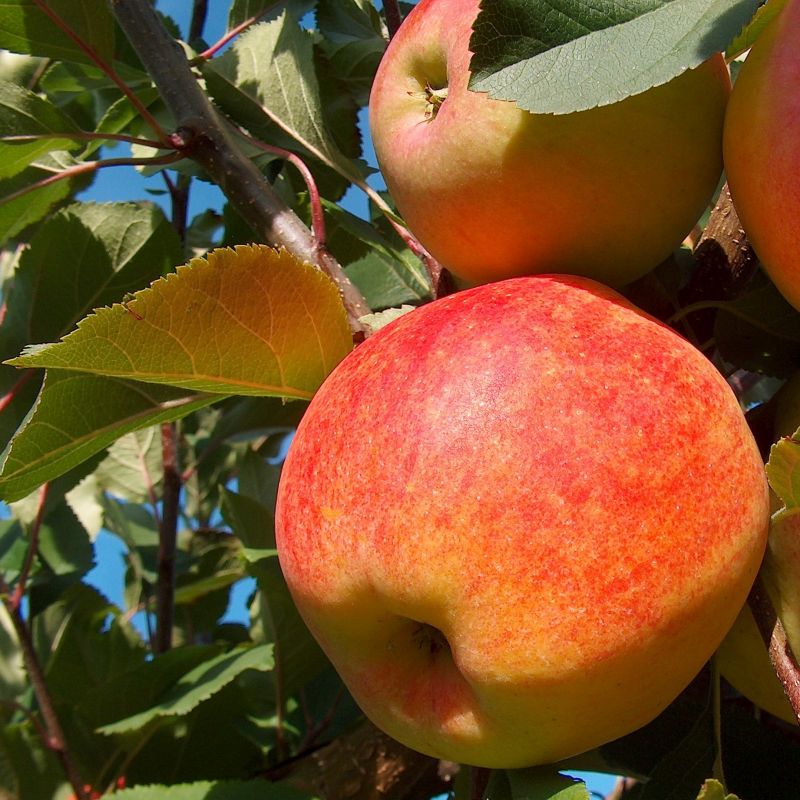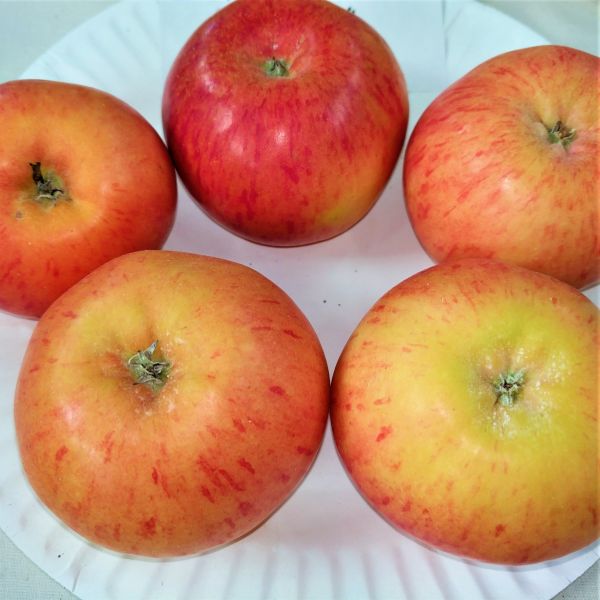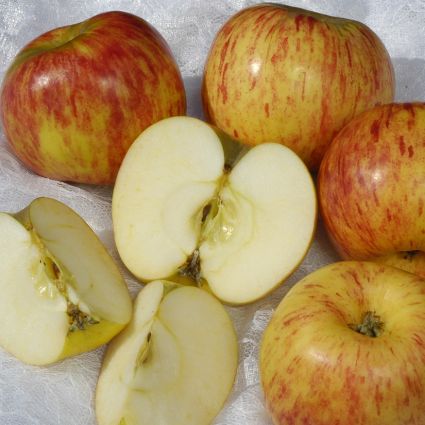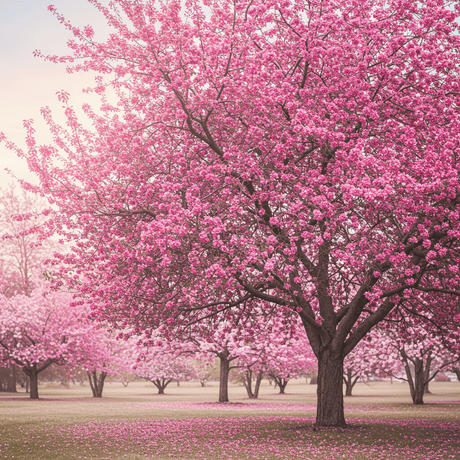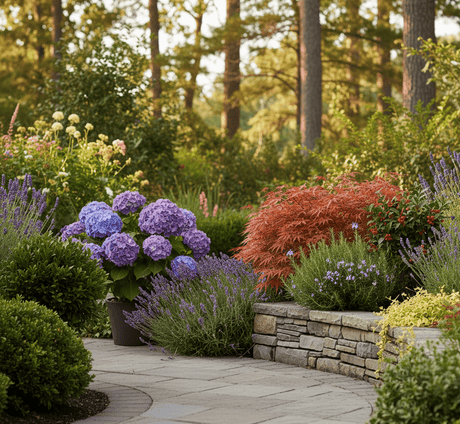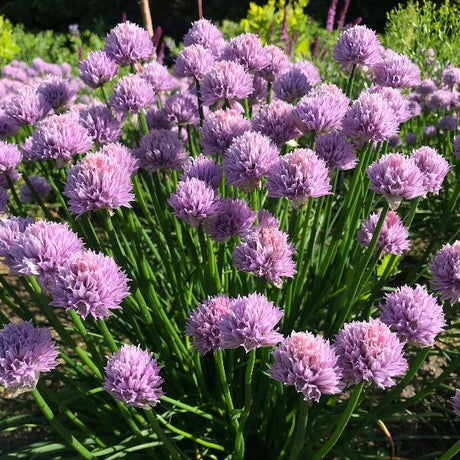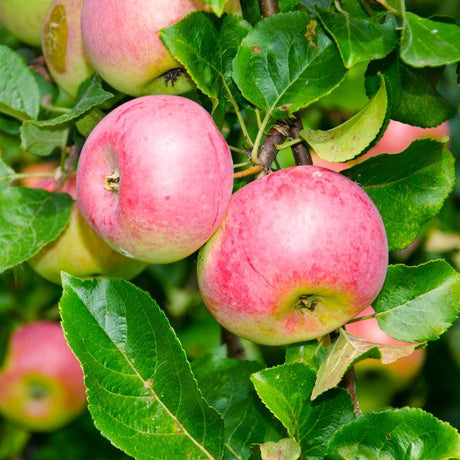Gravenstein Apple Tree
Malus 'Gravenstein'
- Stay Protected with Plant Sentry ™
Gravenstein Apple Tree - #1 Container is backordered and will ship as soon as it is back in stock.
Plant Sentry™
Plant Sentry™

Plant Sentry™ Protected
Your order is protected by our compliance system that:
- Prevents restricted plants from shipping to your state
- Ensures plants meet your state's agricultural requirements
- Protects gardens from invasive pests and diseases
Delivery and Shipping
Delivery and Shipping
Delivery and Shipping
Fast, Safe Plant Delivery
Ships in 3-4 business days • Tracking provided • Weather protected
| Under $50 | $9.99 |
| $50 - $99.99 | $14.99 |
| $100 - $149.99 | $16.99 |
| $150 - $198.99 | $24.99 |
| $199+ | FREE |
✓ Zone-specific timing • ✓ Professional packaging • ✓ Health guarantee
Understanding Plant Options
Nature Hills offers plants in two main formats:
- Container Plants: Grown in pots with soil, sized by container volume and plant age
- Bare Root Plants: Dormant plants without soil, sized by height measurements
Container Plant Sizes
Container sizes indicate plant age and growing capacity rather than liquid volume equivalents. Our containers follow industry-standard nursery "trade gallon" specifications, which differ from standard liquid gallon measurements.
Young Plants (6 months to 18 months old)
| Container Size | Actual Volume | Metric Equivalent |
|---|---|---|
| 2" x 2" x 3" | 0.18 - 0.21 dry quarts | 0.20 - 0.23 dry liters |
| 4" Container | 0.31 - 0.87 dry quarts | 0.35 - 0.96 dry liters |
| 4.5" Container | 0.65 dry quarts | 0.72 dry liters |
| 6" Container | 1.4 dry quarts | 1.59 dry liters |
| 1 Quart | 1 dry quart | 1.1 dry liters |
| 5.5" Container | 1.89 dry quarts | 2.08 dry liters |
Established Plants (18 months to 2.5 years old)
| Container Size | Actual Volume | Metric Equivalent |
|---|---|---|
| 2 Quart | 2 dry quarts | 2.2 dry liters |
| #1 Container | 2.26 - 3.73 dry quarts | 2.49 - 4.11 dry liters |
| 5" x 5" x 12" | 3.5 - 4.3 dry quarts | 3.85 - 4.74 dry liters |
Mature Plants (2-4 years old)
| Container Size | Actual Volume | Metric Equivalent |
|---|---|---|
| #2 Container | 1.19 - 1.76 dry gallons | 5.24 - 7.75 dry liters |
| #3 Container | 2.15 - 2.76 dry gallons | 8.14 - 12.16 dry liters |
Large Plants (3-5 years old)
| Container Size | Actual Volume | Metric Equivalent |
|---|---|---|
| #5 Container | 2.92 - 4.62 dry gallons | 12.86 - 20.35 dry liters |
| #6 Container | 5.25 - 6.01 dry gallons | 23.12 - 26.42 dry liters |
| #7 Container | 5.98 - 6.53 dry gallons | 26.34 - 28.76 dry liters |
Bare Root Plants
Bare root plants are sold by height from the root system to the top of the plant. Plants may exceed minimum height requirements.
Common Sizes:
- Trees: 1 foot, 2 feet, 3 feet, 4 feet, 5 feet, 6 feet
- Shrubs & Perennials: 1 foot, 18 inches, 2 feet
Important Notes
Container Volume Specifications
- Trade Gallon Standard: Our containers follow industry-standard "trade gallon" specifications established by the American National Standards Institute (ANSI Z60.1) for nursery stock
- Volume Variations: Actual soil volume may vary due to plant root systems and growing medium settlement
- Age Indicators: Container size primarily indicates plant age and maturity rather than liquid volume equivalents
Growing Conditions
- Plant size can vary based on variety and growing conditions
- Container size helps indicate plant maturity and establishment level
- Larger containers generally mean more established root systems and faster landscape establishment
Seasonal Availability
- Bare root plants are available seasonally when dormant
- Container plants are available throughout the growing season
- Specific varieties may have limited availability in certain sizes
Questions?
For questions about specific plant sizes or availability, please contact our plant experts who can help you choose the right size for your landscape needs.
Plant Highlights
Gravenstein Apple Tree highlights at a glance!
-
Botanical Name
-
Brand
-
Growing Zones2, 3, 4, 5, 6, 7, 8, 9
-
Growth RateModerate
-
Mature Height
-
Mature Width
-
Leaf Color
-
Flower Color
-
Fall Color
-
Pollinator FriendlyYes
-
Pollinator Required
-
Bloom PeriodLate Spring
-
FragrantYes
Characteristics
Where To Plant
When To Prune
- Late Winter
Water & Moisture Needs
- Moderate
Sunlight Needs
Soil Needs
- Widely Adaptable
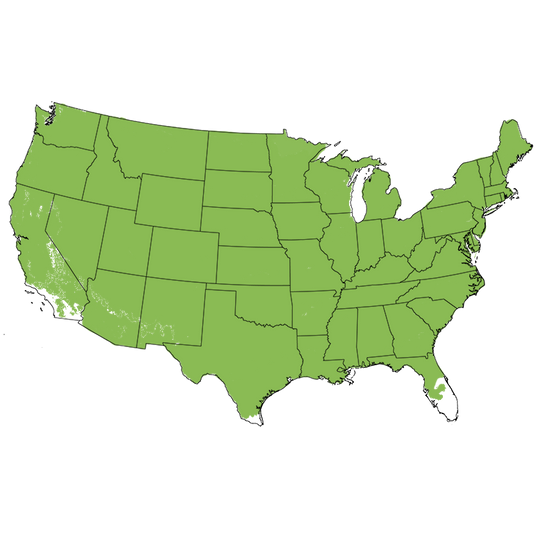
Growing Zones
Distinguished & Heirloom Gravenstein Apple Tree!
- Light Green With Red Striped Fruit
- Very Large Yield
- Distinctive Flavor
- Pale Pink Buds & Fragrant White Blooms
- Tart, Sweet Flavor - Eating Fresh, Cooked & Baked
- Heirloom Apple Since the 17th Century
- Mid-Season Harvest
- Large & Long-Lived Tree
- Prefers Cool Temperatures
- Resistant to Cedar Apple Rust
- Prolonged Picking Season
- Triploid Variety - Requires a Pollinator
- 700 Chill Hours
The Gravenstein Apple originated in Denmark in the early 1600s, where it is called a native and is proclaimed as the "National Apple". This wonderful fruit was so admired that it was brought to the United States with Russian settlers in the early 1800s, with orchards being established at Fort Ross, California.
The Gravenstein Apple Tree (Malus 'Gravenstein') was immediately recognized as a uniquely superior fruit with its adaptability, many usages and wonderful flavor.
Pink buds open to fragrant white blooms, followed by firm, snappy, light-green fruit, with red stripes. Carrying a wonderfully distinctive flavor, the white flesh is tangy and sweet with hints of a honey aroma.
How to Use Gravenstein Apple Tree In The Landscape
The large size and heavy yield make this a fantastic orchard tree should you have the room. Prune smaller for home gardens, these are fantastic heirloom showpieces!
Gravenstein Apple has an excellent sweet-tart flavor and is famous for making the finest apple juice and ciders, pies and apple sauces.
Wonderful as dried fruit as well, the Gravenstein do not have a long shelf life.
The Gravenstein is also prized as an excellent apple sauce and is a favorite for cooking and baking. Of course, fresh off the tree is still the finest way to enjoy the Gravenstein apple.
Not known for being a good shipper or keeper, these are for immediate use only in your favorite recipes.
Home orchards and larger landscapes are perfect for these good-sized ornamental trees. The white blooms are lovely shading your vegetable garden or patio.
#ProPlantTips For Care
It's widely adapted to many climates and is known to produce in the colder zones. The adaptability extends into common apple-growing regions of growing zones 2 - 9, where it is primarily grown by farmers market growers and home gardeners.
Grow Gravenstein in full sun is required for apple trees and well-drained soils. Preferring well-drained soil that is moderately enriched. Mulch to insulate the roots and retain more moisture.
The Gravenstein Apple can be an alternate bearer and thinning your fruit to a fist length between each fruit should be an important part of your fruit tree maintenance. Thinning is a requirement with most all fruit but is particularly important with Gravenstein to avoid a shy cropping year.
One of the earlier ripening varieties, the Gravenstein should be included with a mid-season variety and requires a suitable pollinator.
Get antique flavor, a touch of the old world, and wide adaptability with the Gravenstein Apple Tree from NatureHills.com today!
Gravenstein Apple Tree Frequently Asked Questions
When to Plant Gravenstein Apple Trees
Planting Bareroot trees as soon as you can dig a hole in spring and until hot weather, the earlier the better. Plant container Apple trees throughout the growing season with complete success - that is the benefit of container plants - to extend the planting season. Your County Agricultural Extension Office is a great resource for first and last frost dates in your area.
How to Plant Gravenstein Apple Trees
Dig a large hole only as deep as needed to accommodate the bareroot or container root ball, and twice as wide. Add Nature Hills Root Booster to speed root establishment. Remove the pot or bag and situate it into the hole so the top of the soil (soil line if bareroot), is level with the new location's soil being careful not to plant too deep. Water in again very well and backfill with the same soil you dug up, tamping down gently to ensure there are no air pockets.
Top off with a 3-4 inch thick layer of Arborist mulch. Consider staking your tree to keep its trunk growing straight for the first year to ensure it stands tall against strong winds and drifting snow.
When to Prune Gravenstein Apple Trees
Trim off any broken branches from delivery as soon as you take them out of the box. Prune and trim apple trees while dormant, in late winter or early spring, before you see new growth.
How to Prune Gravenstein Apple Trees
Dormant prune to:
- Remove any double leaders or narrow crotch angles
- Eliminate any crossing branches
- Thin interior branching and leave the fruiting spurs and strong branches in place opening up the canopy
- Branching at least 24-36 inches above the ground
Prune Apple trees in the summer to:
- Control size and shape by reducing the length of longer new growth on vigorous trees
- Remove water sprouts on the main trunk or older branches in the crown
- Remove suckers at the base of the trunk
- Thin fruit during heavy years on established trees
How to Care for Gravenstein Apple Trees
Growing an apple tree is easy when proper soil, good drainage, attention to moisture, and regular fertility are maintained. Once you've chosen an apple tree that works for your climate, in the size you need for your landscape, and its pollinator (if needed), then you've accomplished half the battle!
- Apple trees do best in full sun and well-drained soil
- Water your apple trees when it gets dry - especially during the fruit production stage, and drought periods to keep it stress-free
- Use arborists' wood chips to mulch over the roots of your apples and have your soil tested to see what your soil may be lacking before adding fertilizers
- Maintenance pruning and shaping
Apple trees will tolerate a wide range of soils, so long as water and nutrients are not limited and the pH level is adequate.
How to Fertilize Gravenstein Apple Trees
For the first year, water alone is most important. It is always best to get a soil test to see what your soil is lacking before adding more fertilizers. Once established, a fertilizer routine may be beneficial. We do offer some excellent slow-release organic options, applied according to the package directions.
Fruit trees need more phosphate and it's possible to apply too much nitrogen which affects the soil's pH. Test soil acidity or alkalinity using a pH Tester.
Fertilize in spring when you first see new growth emerging.
- Don't overdo it
- Phosphates are your friends
- Pay attention to pH in areas with extremely high or low soil pH
- Follow the directions
Gravenstein Apple Tree Pollinating Info
Gravenstein is not self-fruiting and needs a pollinating partner. Pair with one of these varieties:
- McIntosh Apple Tree
- Yellow Transparent Apple Trees
- Red Jonathan Apple Tree
- Empire Apple Tree
- Zestar!® Apple Tree
- Red Delicious Apple Tree
- Fuji Apple Tree
Harvest Times for Gravenstein Apple Trees
Gravenstein’s are typically ready to harvest in late July through early August.
Early-Season? Mid-Season? Late-Season? The terminology can be confusing for new apple tree growers. Weather, climate and your tree determine when it's ripe.
For Apples:
- Early-season is usually June-July
- Mid-season can be August-September
- Late-season can be from late September-November
The growing season consists of spring, summer, and fall, and varies with climate and weather. Areas with longer growing seasons in the warmer hardiness zones can greatly affect the harvest times for each particular apple variety grown in your area. Learn which growing zone you are in.
What Shipping Options Do You Offer?
NatureHills.com works closely with our growers and nursery professionals to ensure we ship when it is most appropriate for your area. Our goal is to deliver the hardiest plants by avoiding extreme high and low temperatures. Check out our shipping schedule for more information and to learn our wills and won'ts when it comes to shipping plants. Find your Gravenstein Apple Tree for sale here at NatureHills.com!
Beloved Early Season Gravenstein Apple
The Gravenstein apple was discovered in Denmark in the 1600's and named Grasten, meaning Graystone. In the United States, the Gravenstein owes part of its popularity to the Russians early occupation of the California Sonoma Coast, who left the seed for what would become the mainstay of Sonoma County, the Gravenstein Apple.
In the late 1700's the Russian Fur traders had begun to settle in Alaska, but found the climate was not conducive to growing crops they were used to growing. Looking for a better location to continue to hunt and farm crops to supply the fur trappers along the coast, a site along the Sonoma coast was settled in 1811 and Fort Ross was erected.
This did not turn out well for the Russians, as the climate of the coast was heavy in summer fog and very few of the crops were successful. The one food crop that was successive were the Gravenstein Apples they had planted. Unsuccessful farming resulted in a brief stay and by 1841, the Russians sold out to John Sutter, who gutted the fort to build his fort in Sacramento. In 8 years, it would become the center of the California Gold rush.
The Gravenstein apple orchards left at Fort Ross were not well cared for, but the plants were ideally suited to the climate of the coast and survived well. It appears that cutting wood was taken from the trees regularly and the Gravenstein apple began to appear throughout Sonoma County during the mid-1800's.
Luther Burbank, the famous plant breeder of Sonoma County, was a particular fan of the Gravenstein. In 1883, a young farmer Nathaniel Griffith, interested in growing apples, asked the advice of Luther Burbank on what apple varieties he would recommend. Burbank recommends he plant his 78 acres in Gravenstein Apples. This began a very successful business for Mr. Griffith with demand for his apples quickly coming from as far away as southern California. By the early 1900's, more than 10,000 plus acres are planted in Sonoma county.
In the years to come, Gravenstein would become one of the most popular early season apples, but this would not last. The Gravenstein Apple had two failings: one was its varied set from light to heavy, year to year, and second was its short shelf-life. The Gravenstein was not a keeper-shipper.
The more modern apples hybridized for shipping and storage, along with the more profitable grape-growing for the wine industry, would see the demise of the Gravenstein apple industry in Sonoma beginning in the late 1970's. Today, there are less than 700 acres still in production.
Still famous for its pies, fresh eating, juicing, and sauces, along with its wide range of adaptability, the Gravenstein Apple remains one of the most popular of the home garden variety planted today.

